August 14, 2022
I awoke around 2 am to thunder and torrential rain, something we’d likely be camping in had we not stopped for the night in a local inn. Not that storms are a bad thing when we’re sleeping in the truck, but we’d probably have gotten wet if nature called.
After breakfast, we checked out, reloaded the truck with our cooler—once again filled with our ice packs and some fresh food. We briefly chatted with a few motorcyclists getting ready to leave the inn. They, like most travelers this time of year, were heading back from Alaska and gave us a few tips about (bad) road conditions and (fabulous) scenery ahead of us.
Heading out of town, we drove about a mile to the Fort Nelson Heritage Museum whose soggy grounds were filled with antique mining and farm equipment. We looked at the equipment for a while until the rain chased us back into our truck. Then we filled up the tank and continued northwest on the Alcan.
About an hour into our drive, we were back in the Rockies and the higher elevation brought us out of the rain and above some of the clouds.
We then came to the first of several Alcan construction projects on our journey. A few yards before a detour, Susan asked me to turn off the highway into a tiny store that she’d read about in a Facebook group devoted to Alcan travelers. Apparently, delicious cinnamon rolls are a thing at various stops along the Alcan and this store was one of the best. CAN$9.50 later, we dug into an incredibly good one, large enough to share and still warm from the oven. My motto is that there is no shame in second breakfast. The detour was brief, and we were too busy munching on the cinnamon bun to really pay much attention to it.
Soon the Alcan wound around granite cliffs in Stone Mountain Provincial Park. Beauty and wildlife surrounded us in every direction. At one point a couple of caribou (aka reindeer) trotted along the road before disappearing into a ravine.
We found a short hike in the park to a mineral lick but didn’t see any of the mountain goats that are said to visit. The mosquitos were pretty bad but we’d applied DEET and they mostly respected it.
Susan next guided us to hot springs she’d read about located just off the highway a little farther on in the park. For CAD$10 each, we entered Liard Hot Springs along an 800-foot-long boardwalk to a beautifully made and very large natural hot spring (apparently the largest in Canada) with a gravel bottom and clear water. Very hot water came in upstream and mixed with cooler water so any temperature we wanted, from near-boiling to lukewarm, was available. It felt wonderful.
We chatted with a few other visitors who were covered in mud from the banks. They told us the mud here was well-known for its cleansing and detox properties. Susan applied some of the mud along the banks to her face while I sat on a submerged concrete bench and enjoyed a hot soak.
The water was about three feet deep and flowed slowly, emptying over a small dam into a stream further down where we could swim in warm water. A beautiful wooden building had been constructed with changing rooms and the whole thing was a delightful experience.
As we left the hot springs, we were struck by the tall sturdy fencing surrounding the boardwalk and springs as well as the tall electrified entrance gate and signs warning visitors to stay on the trail. We later learned that in 1997, the worst bear attack in Canadian history had occurred along the trail we were on when a bear attacked a mother who was with her two children. The bear killed the mother as well as a brave bystander who tried to help, and injured one of the woman’s sons and another man. It was a sobering reminder of just how wild a place we were in.
About a half hour later, we were reminded of the wildness again when we spotted a herd of wild bison grazing by a river alongside the Alcan.
Not long after, we hit the second, and what we anticipated would be the worst of the Alcan construction projects, needed because a few weeks earlier heavy rains had completely washed out the road. We’d read about long delays and rerouting as recently as a week before and were pleasantly surprised about how quickly the crews had created a workaround. The detour barely delayed us.
Soon after the detour, we were out of the Rockies and the terrain was now rolling hills and tundra as far as the eye could see. A few hours later, we reached the 60th parallel and officially were in the “north.” Lands above the 60th, a sign explained, “have captured the popular imagination with their rich culture, rugged beauty and self-sufficient peoples.”
The 60th parallel also marks the boundary between BC and the Yukon Territory. A few minutes later, we pulled over at a large sign marking the beginning of the Yukon Territory.
Just across the border, we stopped at the town of Watson Lake, Yukon. Over the years, visitors with approval and even help from the town, had constructed a huge sign post forest. The forest began in 1942 during construction of the Alcan. The U.S. Army Corp of Engineers placed mileposts at their camps that listed distances to places in the Yukon, U.S. cities and various other places and a homesick soldier added his own hometown (Danville, IL) sign to the post in Watson Lake and from there, a tradition began.
Tens of thousands of commercial and handmade signs with places and family names were attached to poles. Locals, beginning with the Lion’s Club, then the “Hippie Club,” and eventually the town itself, have protected the Sign Post Forest and it continues to grow.
The “forest” covered a couple of acres and we wandered through looking at signs from places from all over the world. It was fascinating to see how many travelers had followed the Alcan over the years – and how many had brought signs with them.
Hungry, but not in the mood to cook, we stopped in one of the two small stores in the town and wandered in wondering what food we could pick up for dinner that night but only found US$15 pre-packaged salads and passed. On the way out, a stout Asian man called to me and said he could make us burgers and fries for only US$23 each. We passed.
Instead, we headed a block away to a pleasant grassy park along a stream and heated up some tortilla soup with tortilla chips. Unfortunately we couldn’t enjoy our meal in this serene spot. Now that it was early evening the mosquitoes were also hungry and swarmed so much that we were forced inside the truck to eat.
An hour later and back on the road, I saw a small car parked in a small gravel rest area with a large grey dog in front of it. Odd, I thought, the people were inside the car but the dog was loose. Suddenly my mind screamed WOLF.
I hit the brakes and we pulled slowly into the parking lot and there he was; a medium-sized grey wolf sauntered into the woods as the car left. Amazed, we managed to snap a quick picture or two of him as headed into the trees, but then he came back out of the forest and wandered around the parking lot, both of us excitedly snapping photos. We couldn’t believe our luck. A wolf? In a rest area?
As we watched, he slowly circled the truck, checking us out. I killed the engine so we wouldn’t scare him off. For 20 minutes the wolf watched us watching him. He even sat down for a while before finally sauntering back into the forest. We were stunned. Wolves had always been special to me and only last year I’d seen my first one in the wild at Yellowstone, but he was far away and dozens of other people were focusing their big lenses on him. This one looked me in the eyes from 20 feet away.
After the wolf sighting, we drove for a couple more hours through uninhabited forest with few cars. Camping would be a challenge tonight. We knew the mosquitoes would be bad anywhere along the road so we found a turnoff that we’d read led to a microwave tower high on hill where there would be a breeze to keep the “mozzies” away. The steep double-track road was overgrown and after 10 minutes I regretted turning onto it. But there was no way to turn around and backing down would be dangerous with drop-offs only inches away. We were many miles from any town along a lonely stretch of the Alcan and now we were off-roading several more miles along an unknown road. I patted the truck’s steering wheel – a breakdown here would be terrible.
Finally, a half-hour later, we’d reached the top. The view was spectacular with mountains all around. A strong wind blew away any potential mosquitoes and we found a flat place for the truck. It was perfect – until I opened the door. This far from anywhere, the microwave tower was powered by a loud diesel generator, putt-putting out a pipe without a muffler. Walking to the other side of the building, the sound was muffled but the wind brought a strong exhaust smell. Depending on where were on the hilltop, we’d either have noise or smelly exhaust, neither of which we wanted in the Yukon wilderness.
Disappointed, we decided to head back down the long road. It would be dark soon, and we were tired and needed a place to sleep. Back on the Alcan, a mile farther Susan found us a lovely spot right next to a rushing stream. I stepped out and was instantly assaulted by hordes of mosquitoes. We’d get eaten alive just trying put on the mosquito screens. Now frustrated, we backtracked to the tower road where we’d seen a small flat spot a short way up the steep road that wasn’t pretty but would have to do. We arrived back at the spot just as night fell, which this far north was after 10 pm even in mid-August. The mosquitoes were only half as thick as they’d been down at the creek as we hurriedly put on our mosquito screens. We’d have to wait until morning after the chill had slowed them down to even brush our teeth.

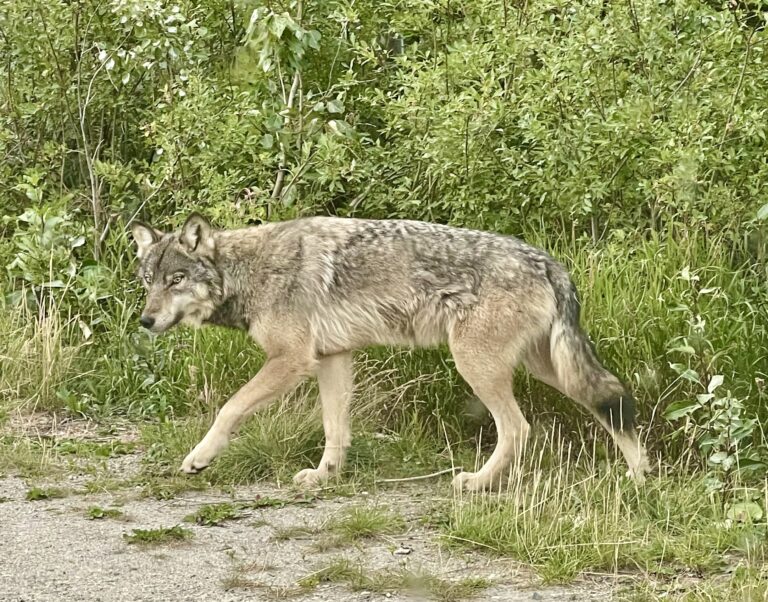
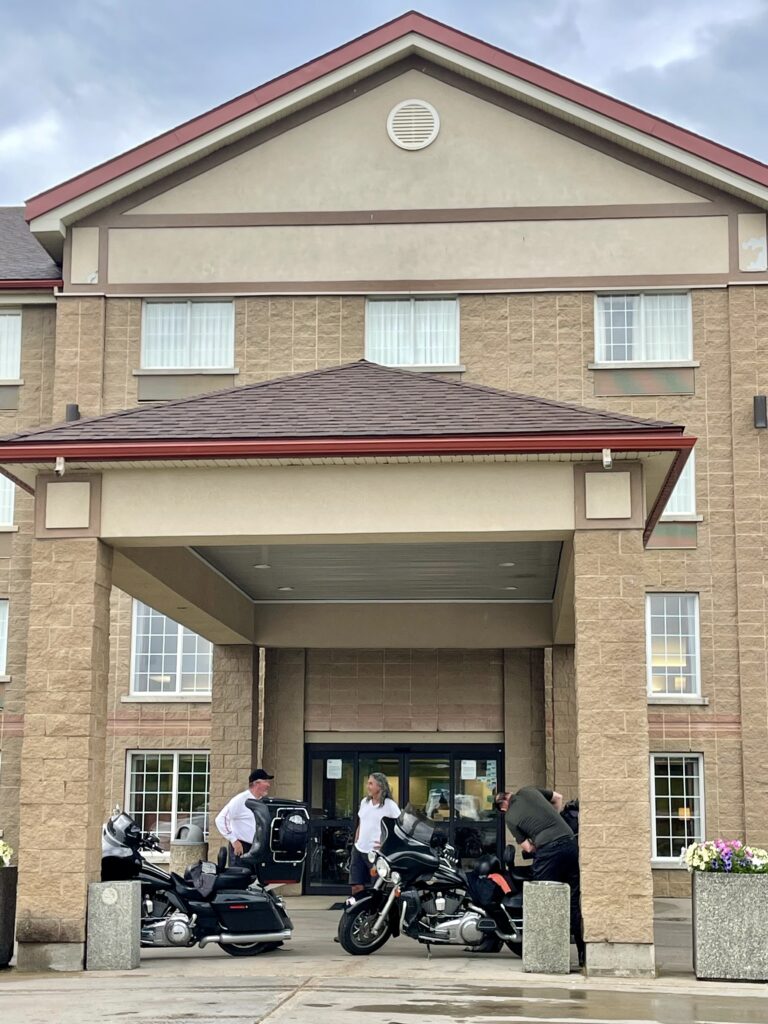
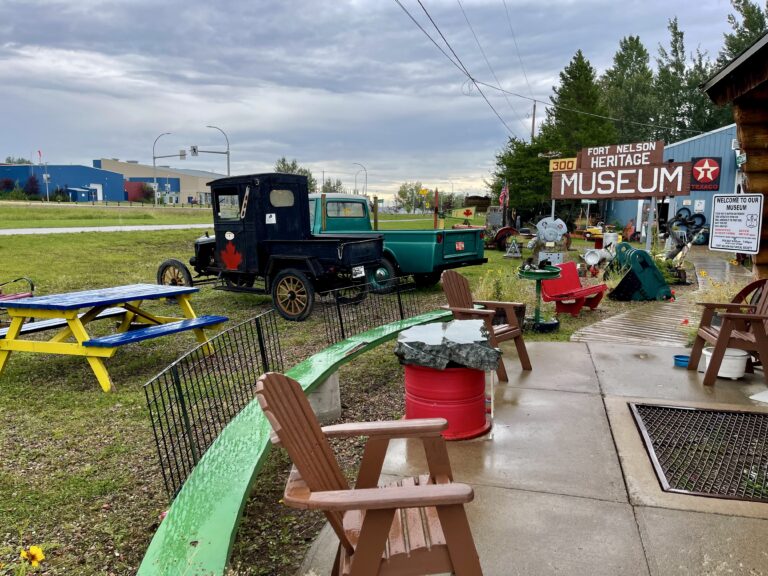
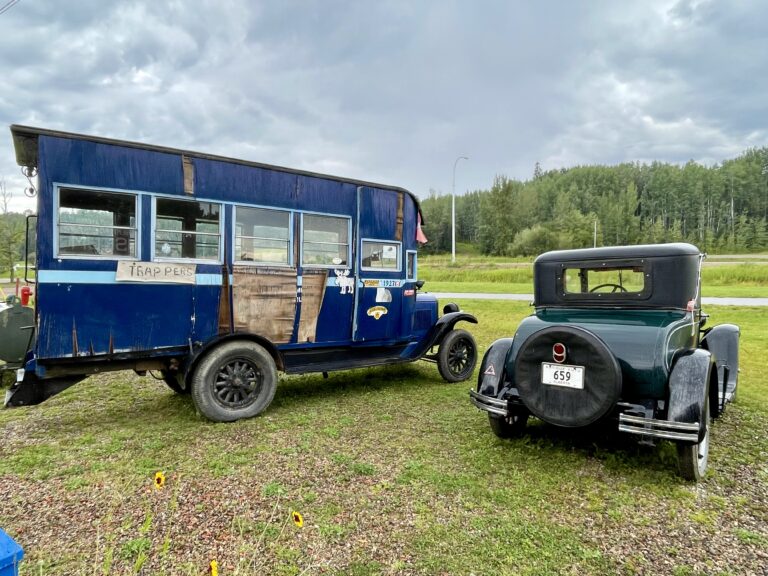
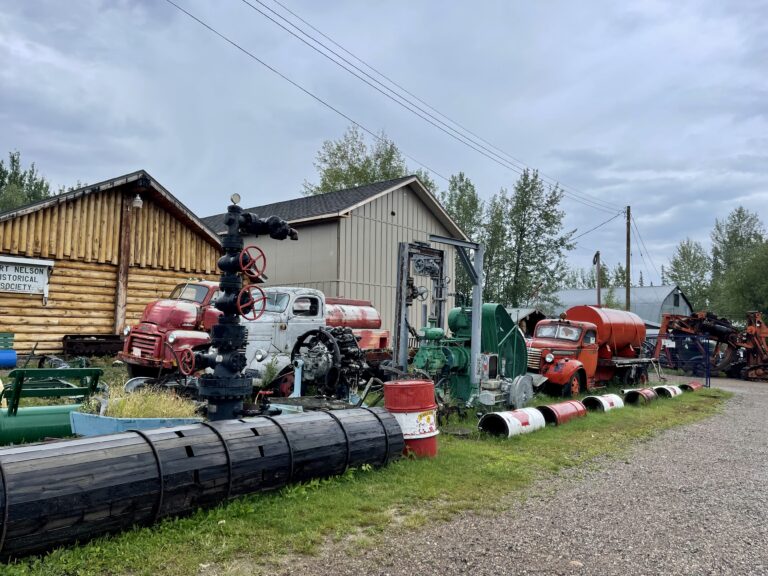
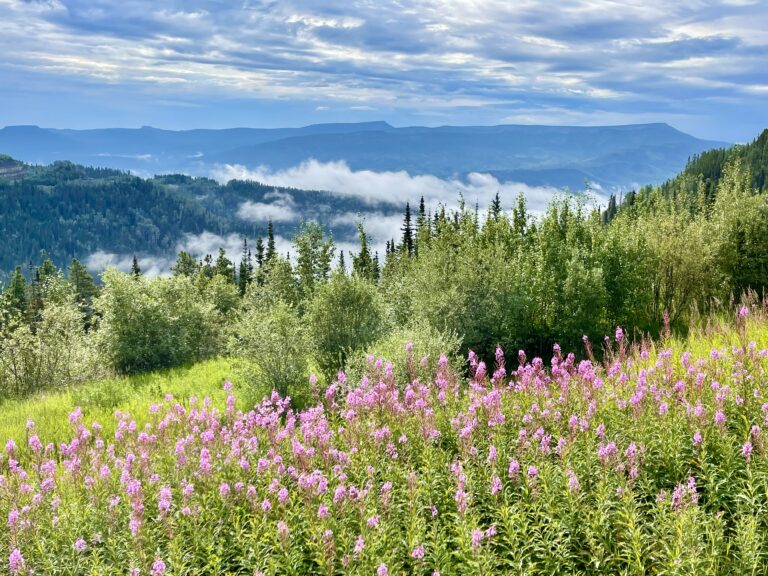
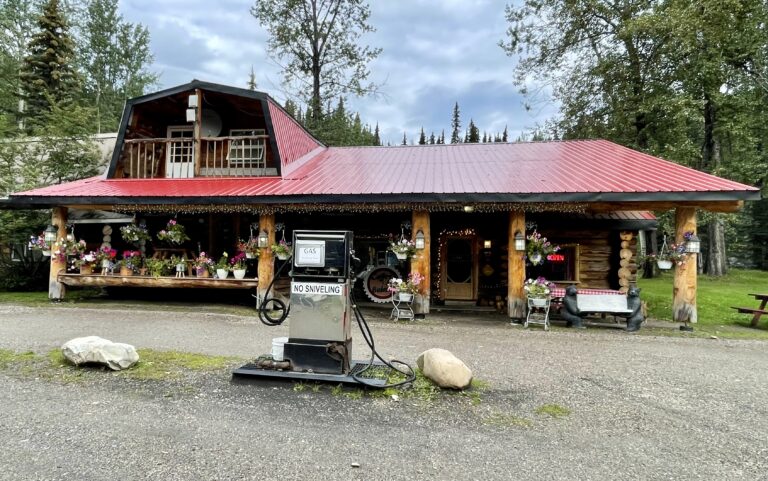
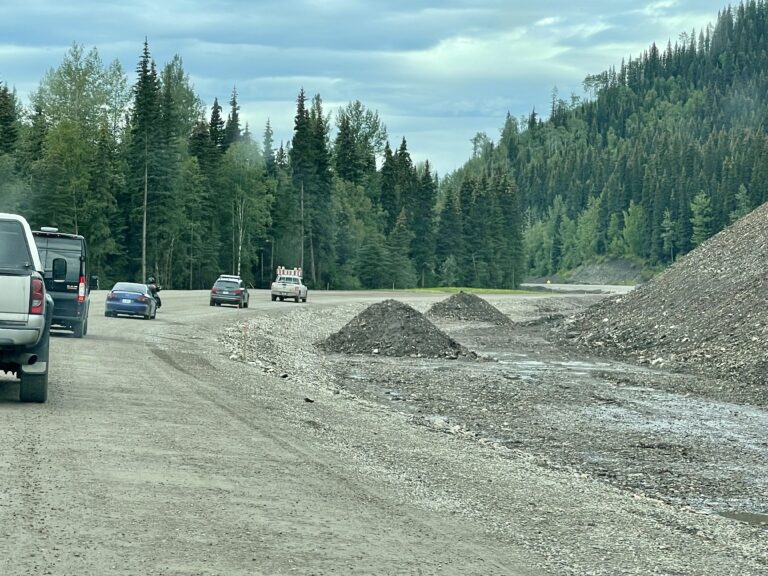
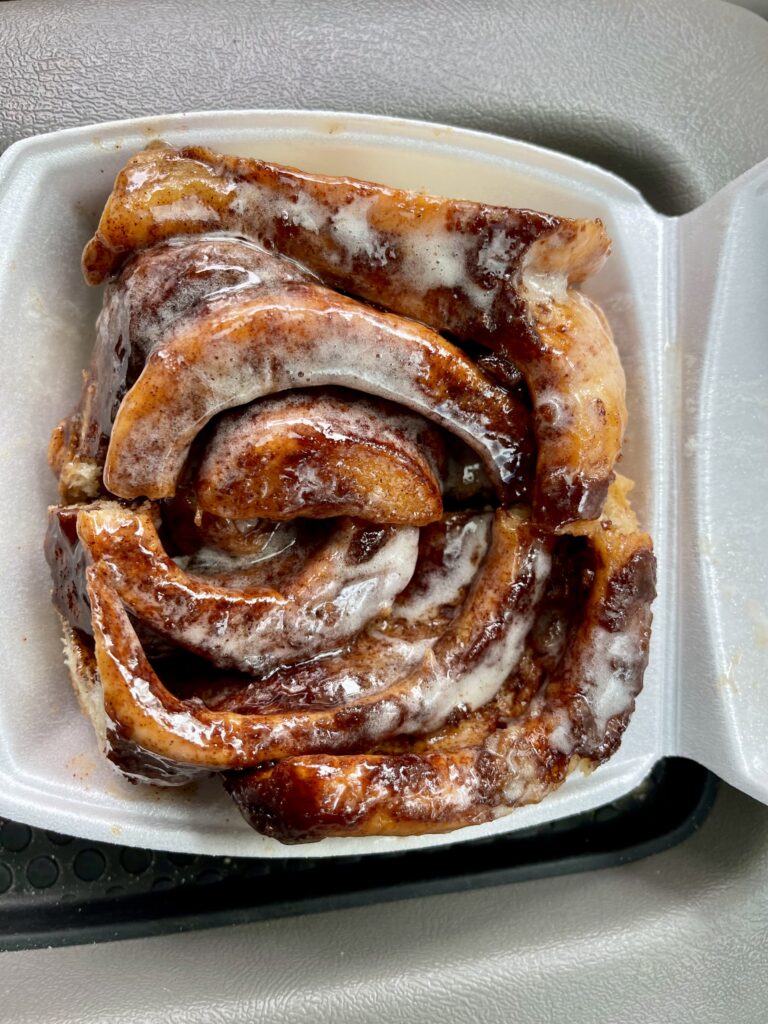
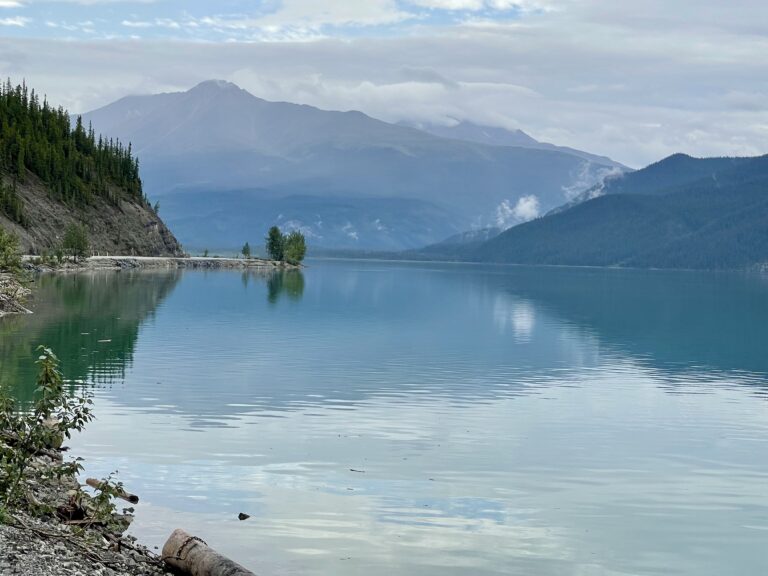
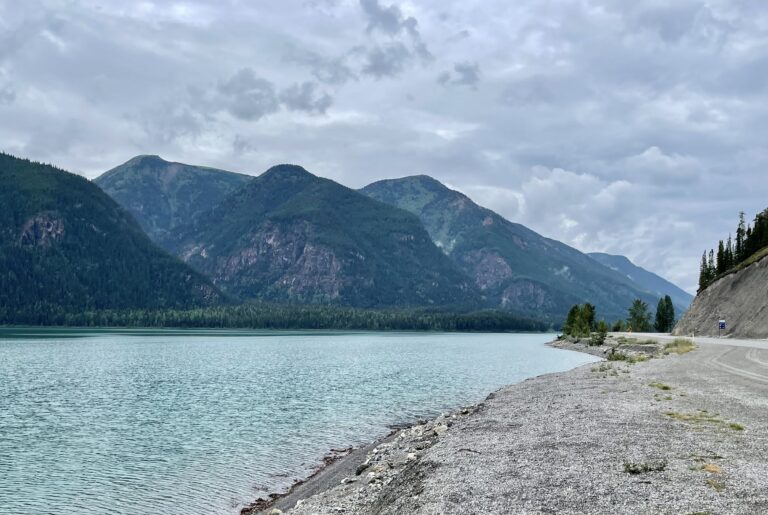
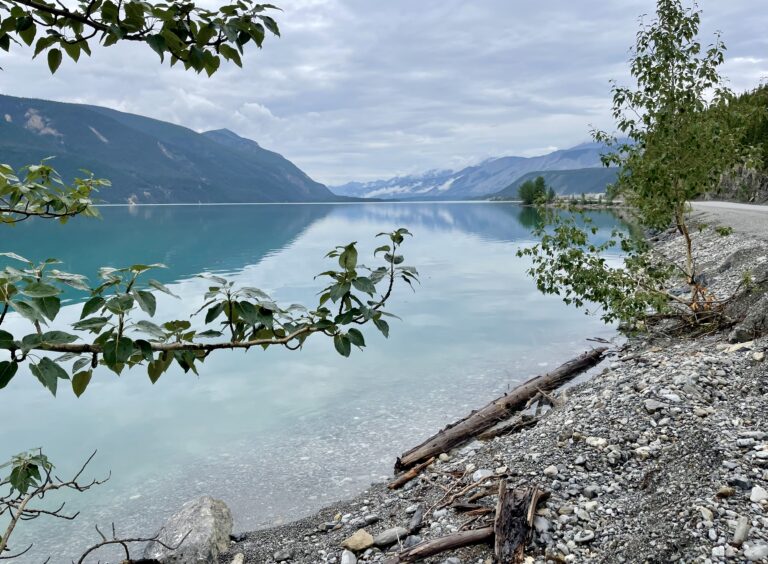
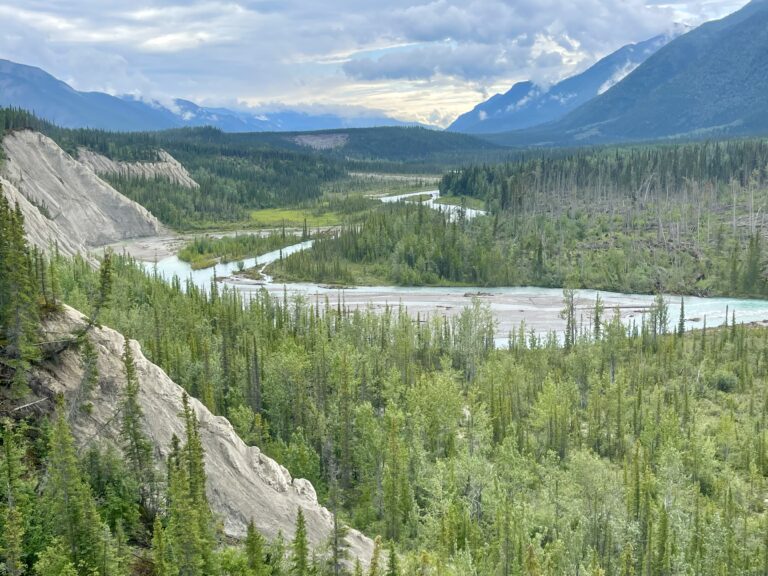
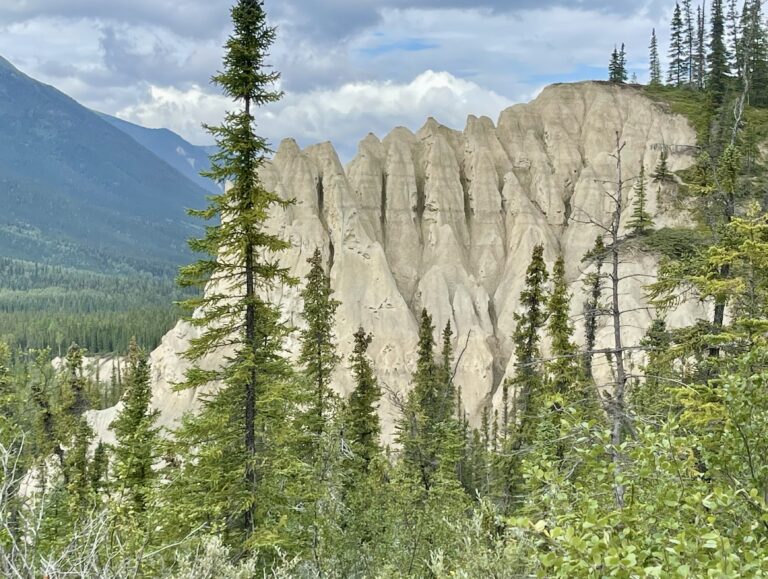
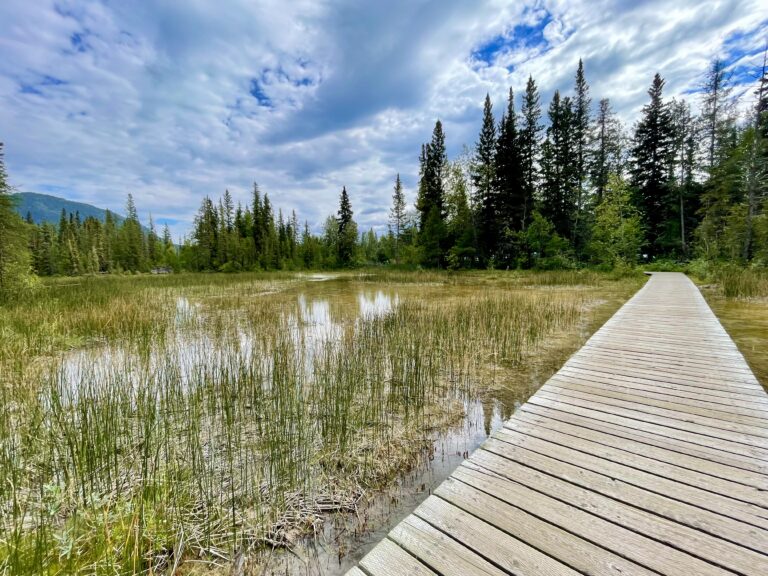
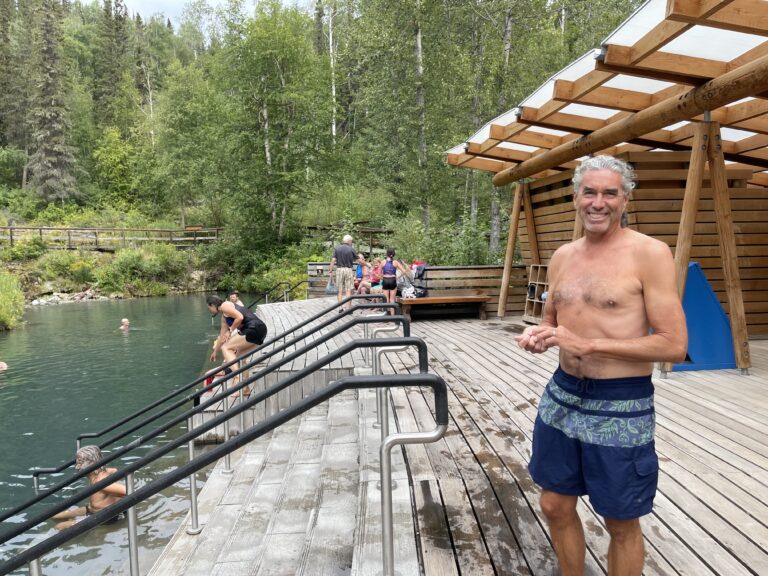
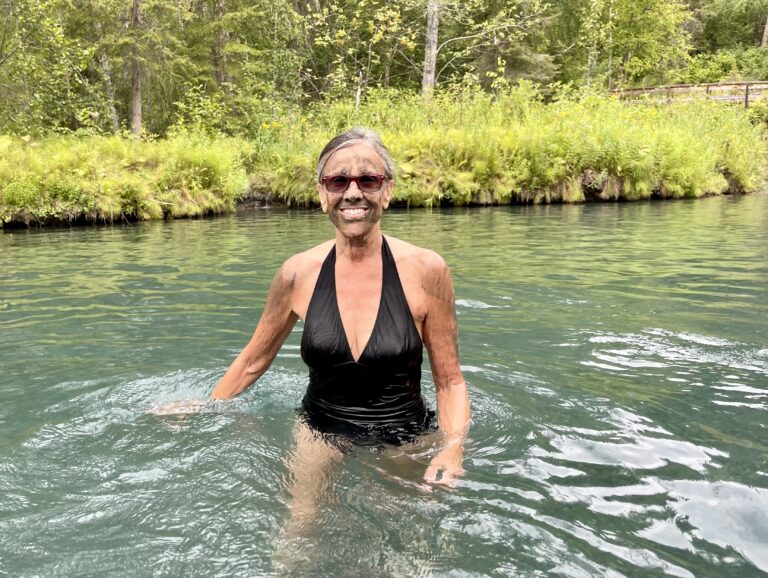
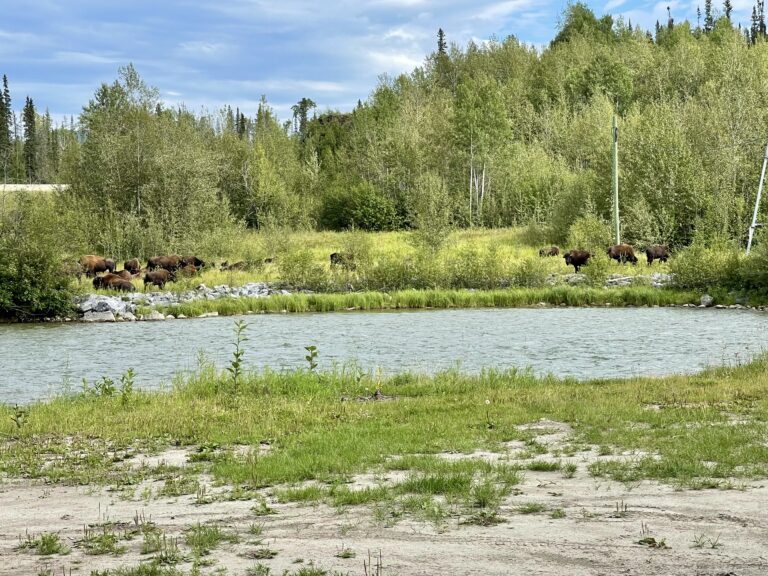
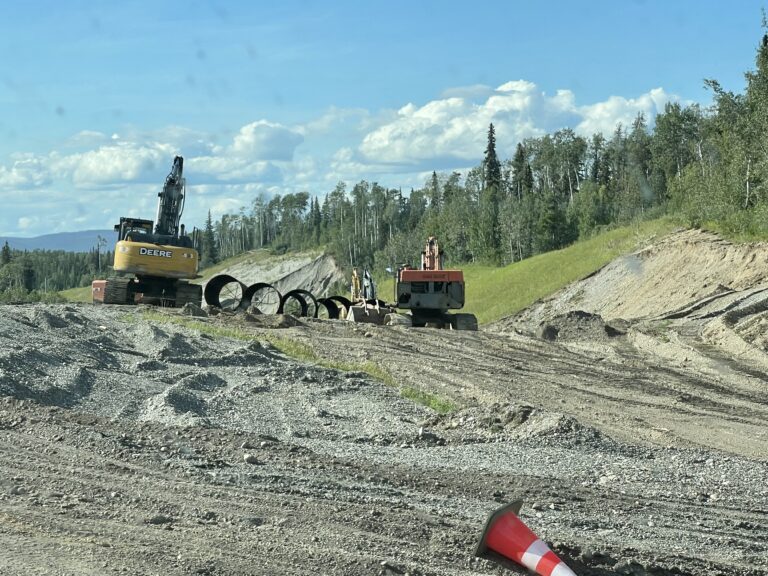
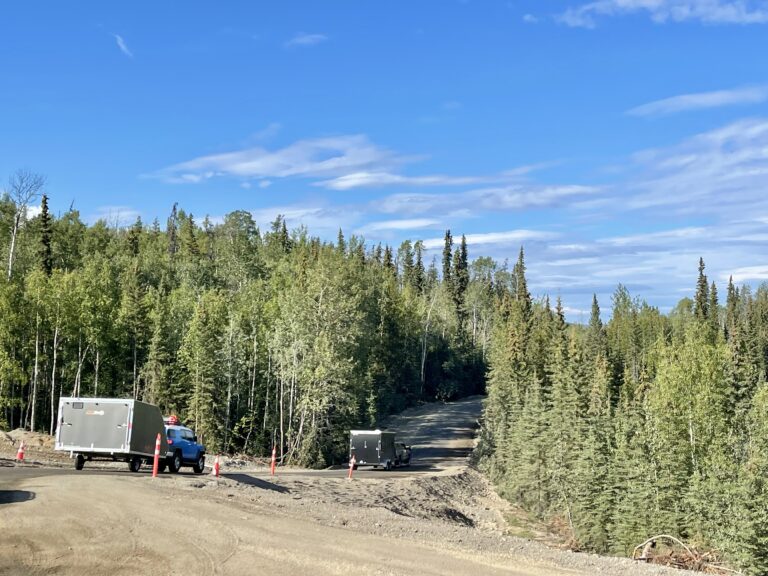
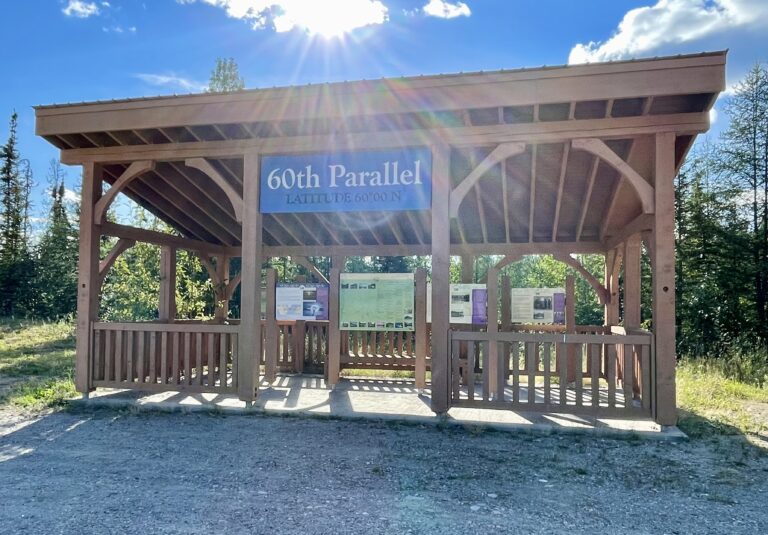
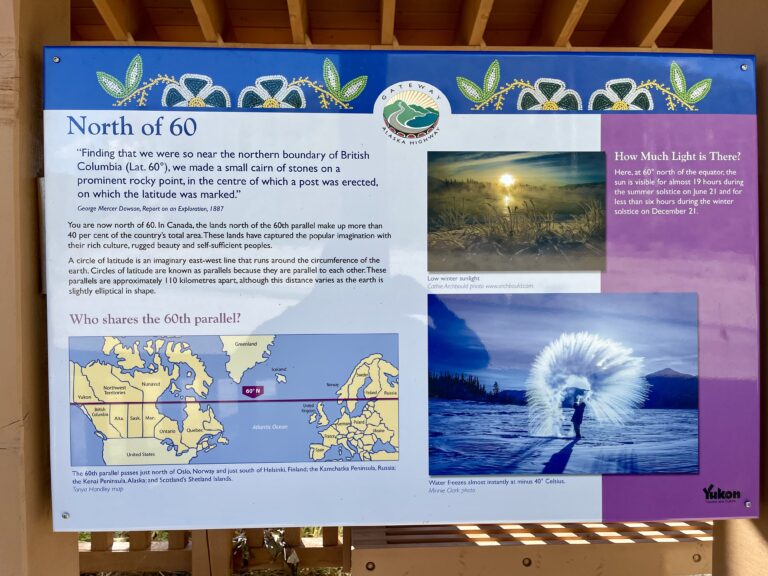
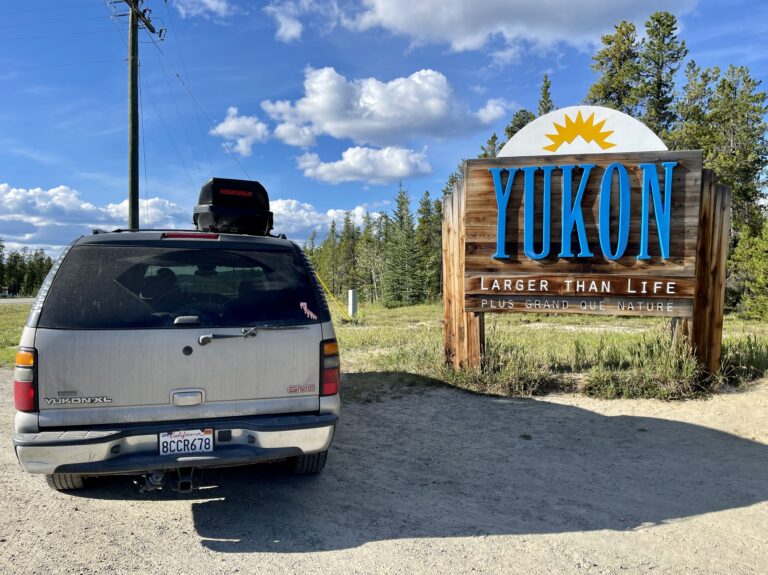
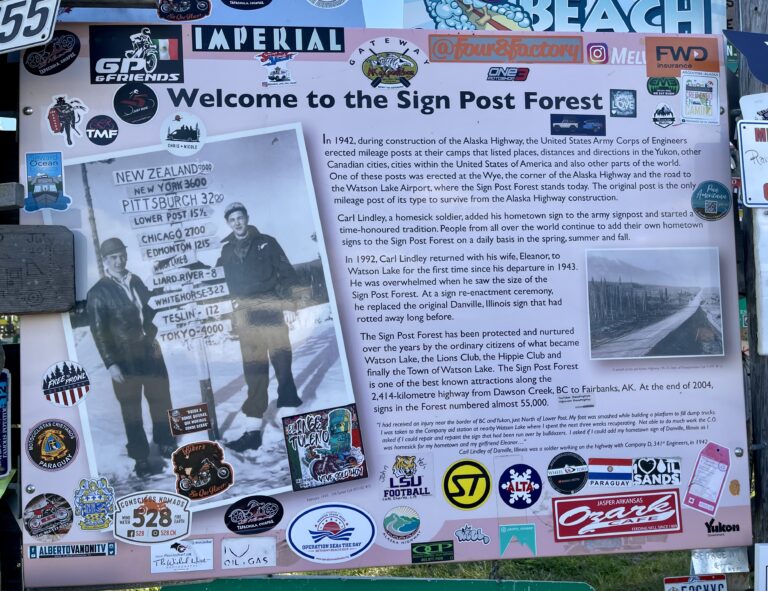
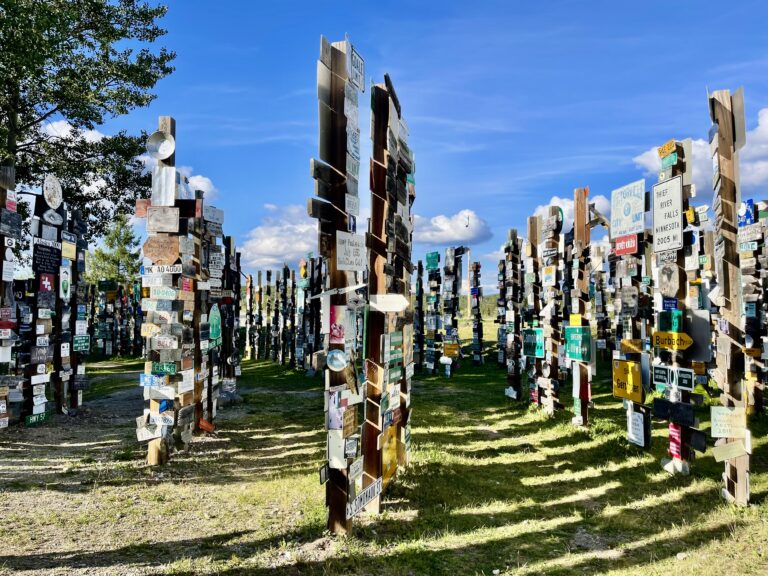
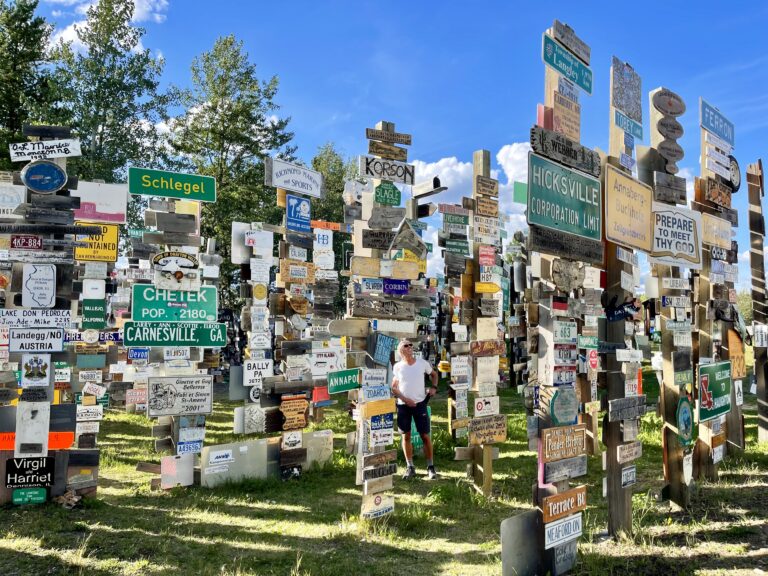
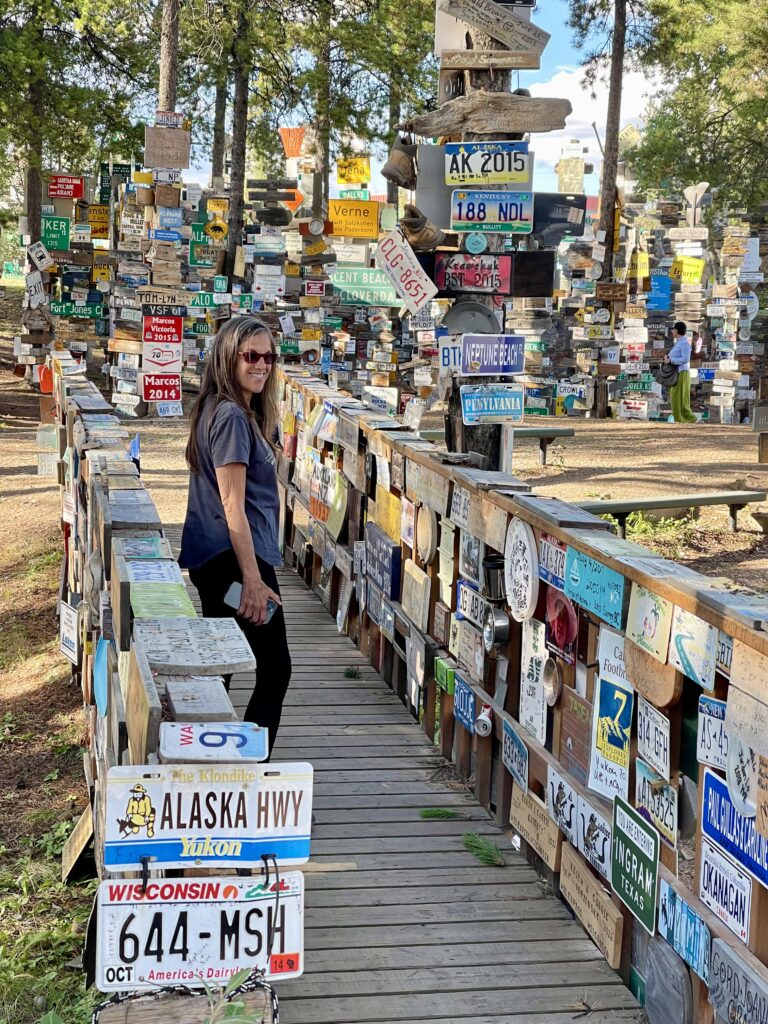
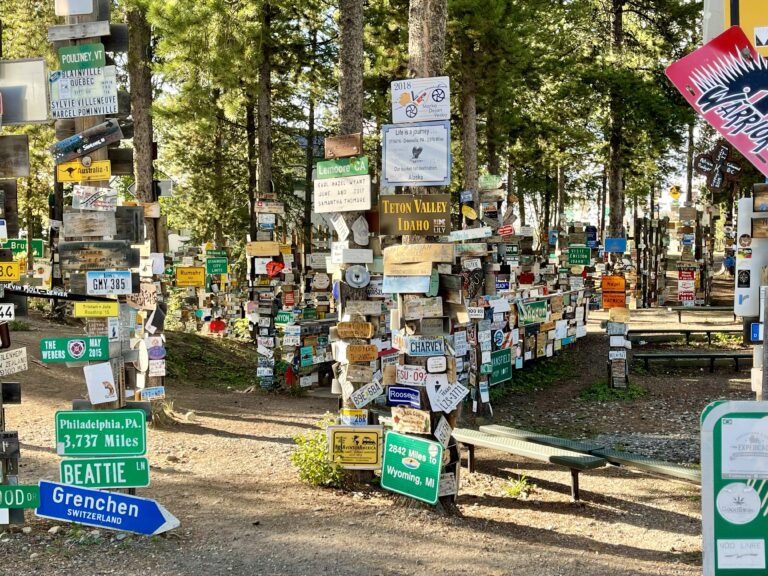
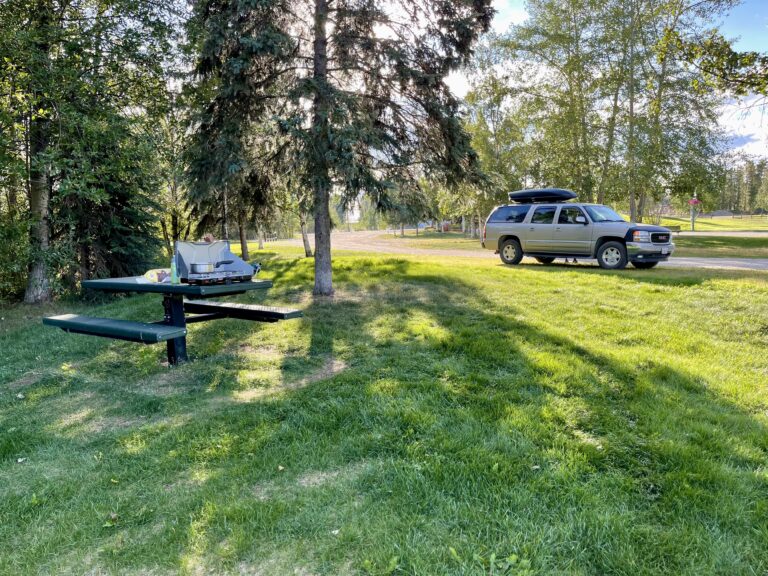
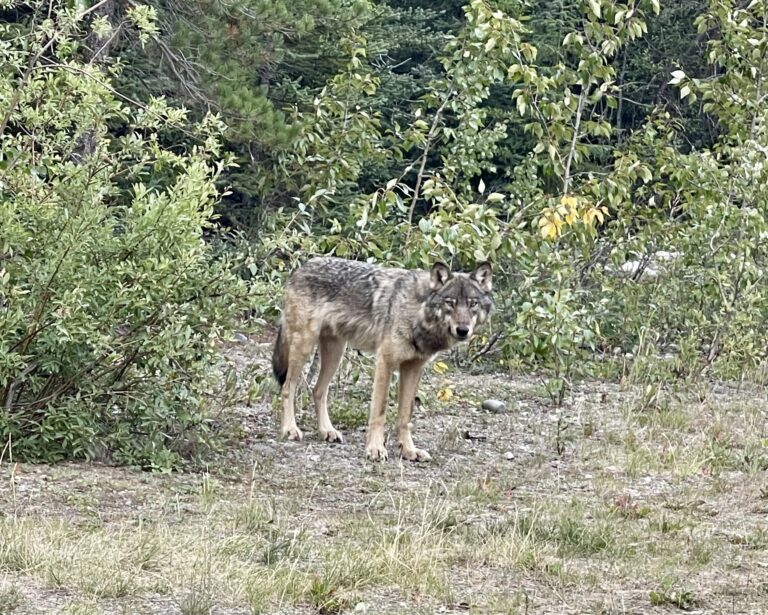
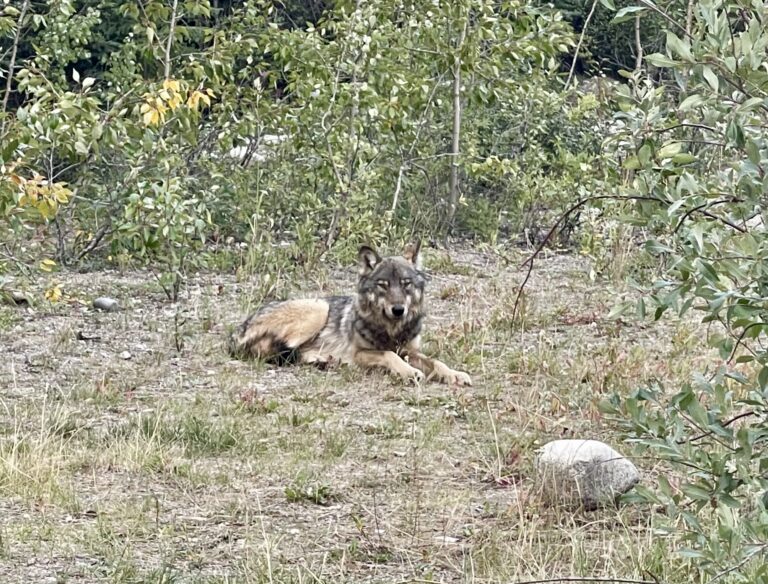
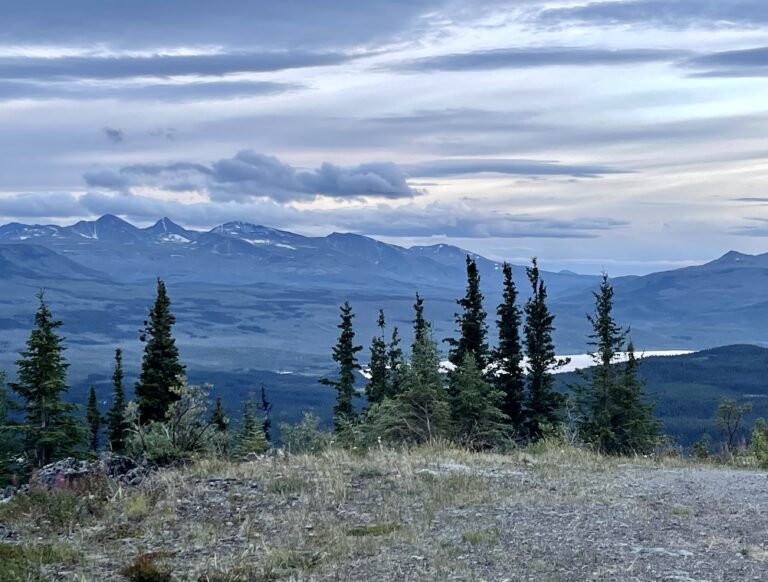
2 Responses
Werewolves of the Yukon! Great shots.